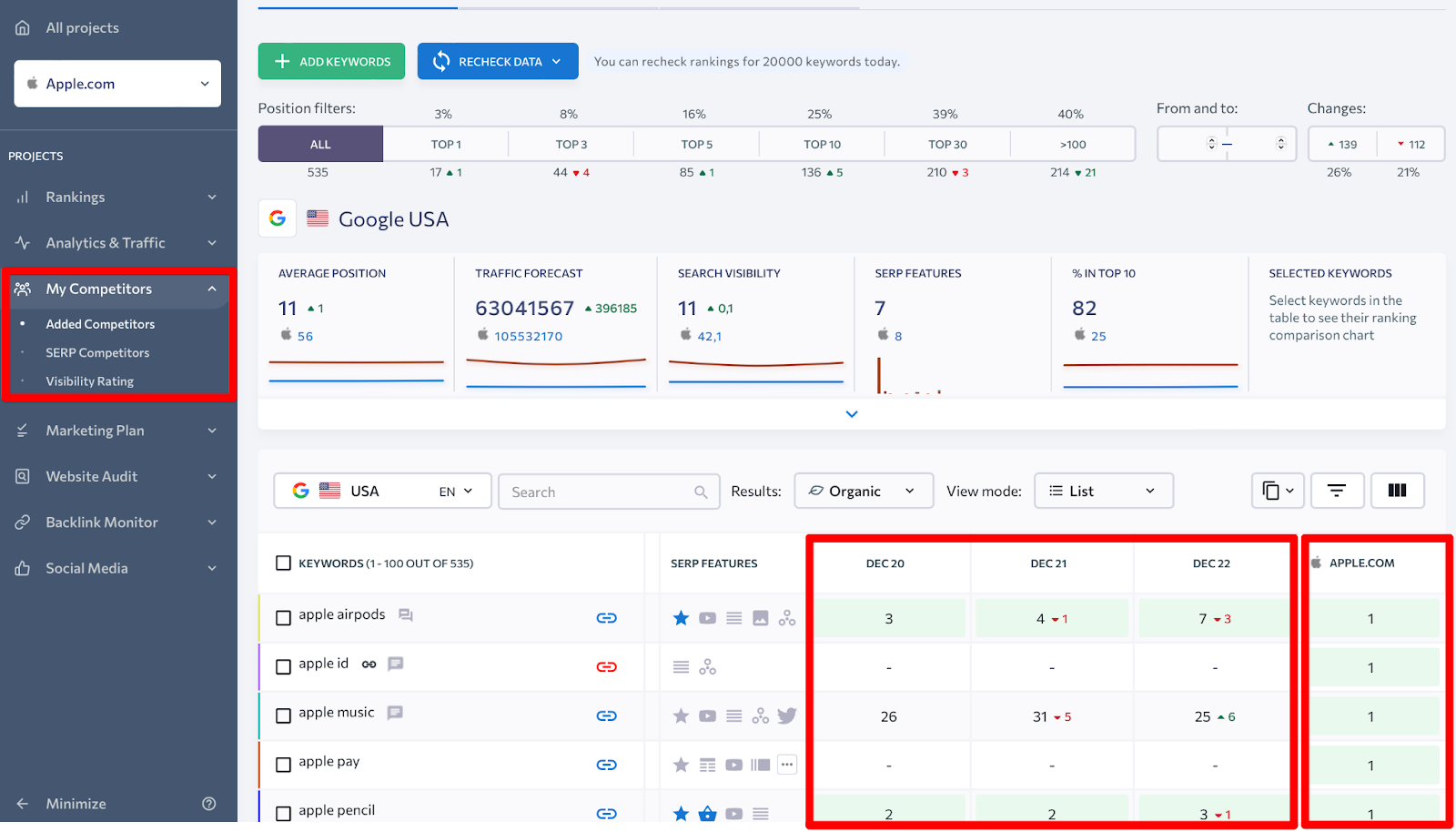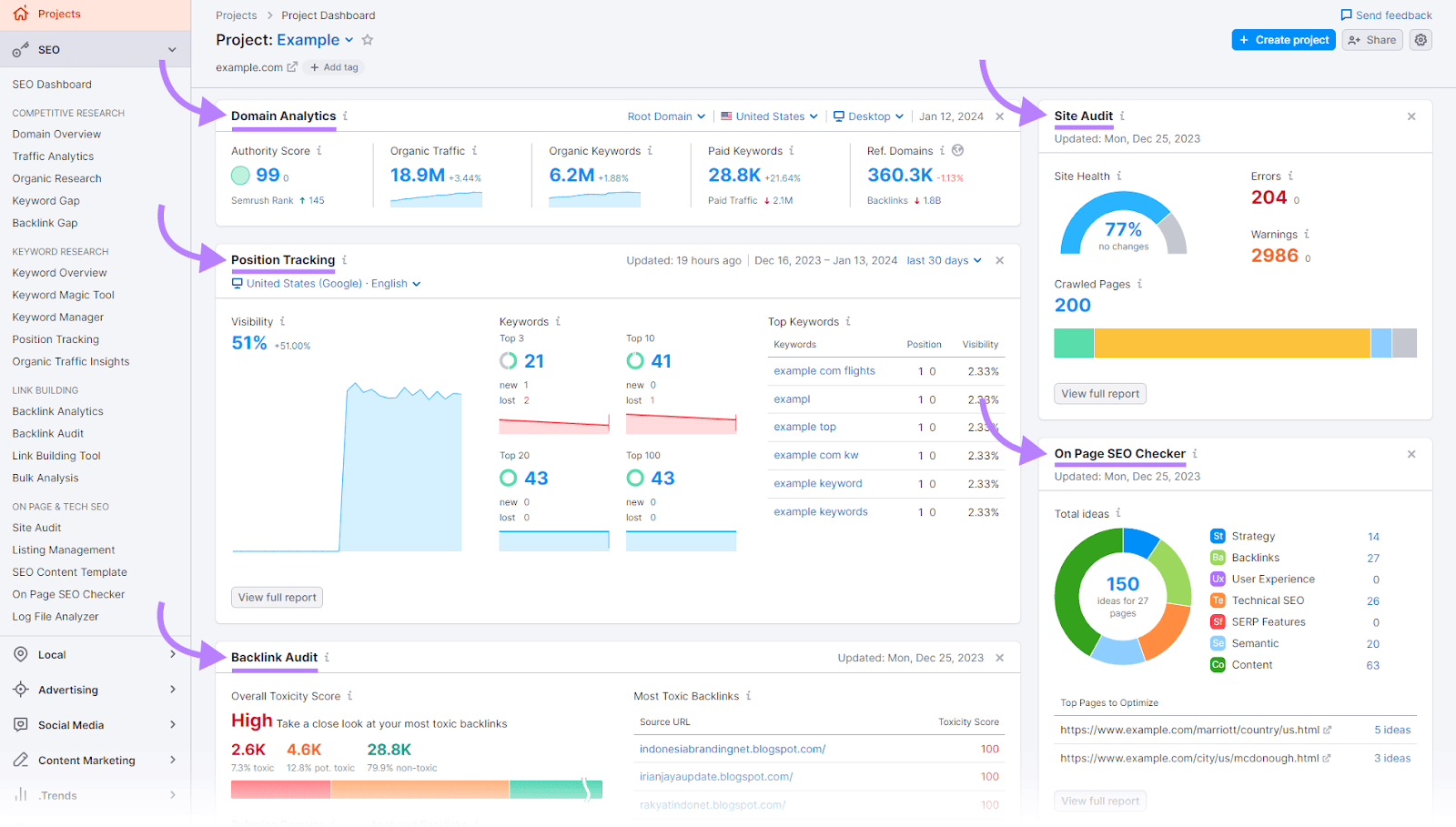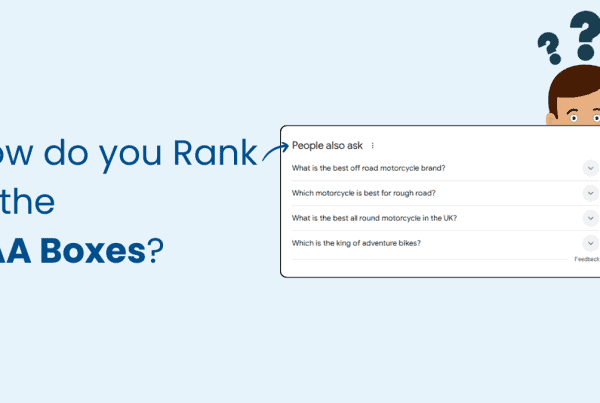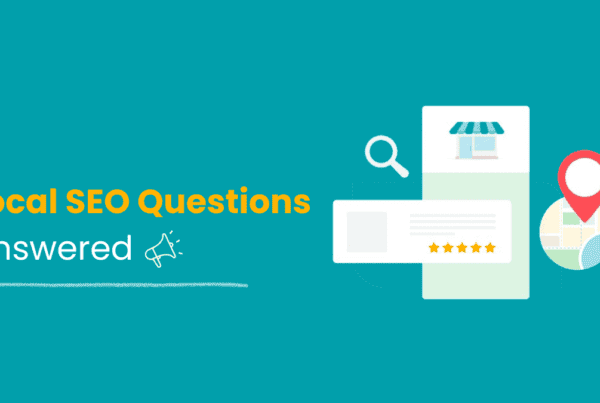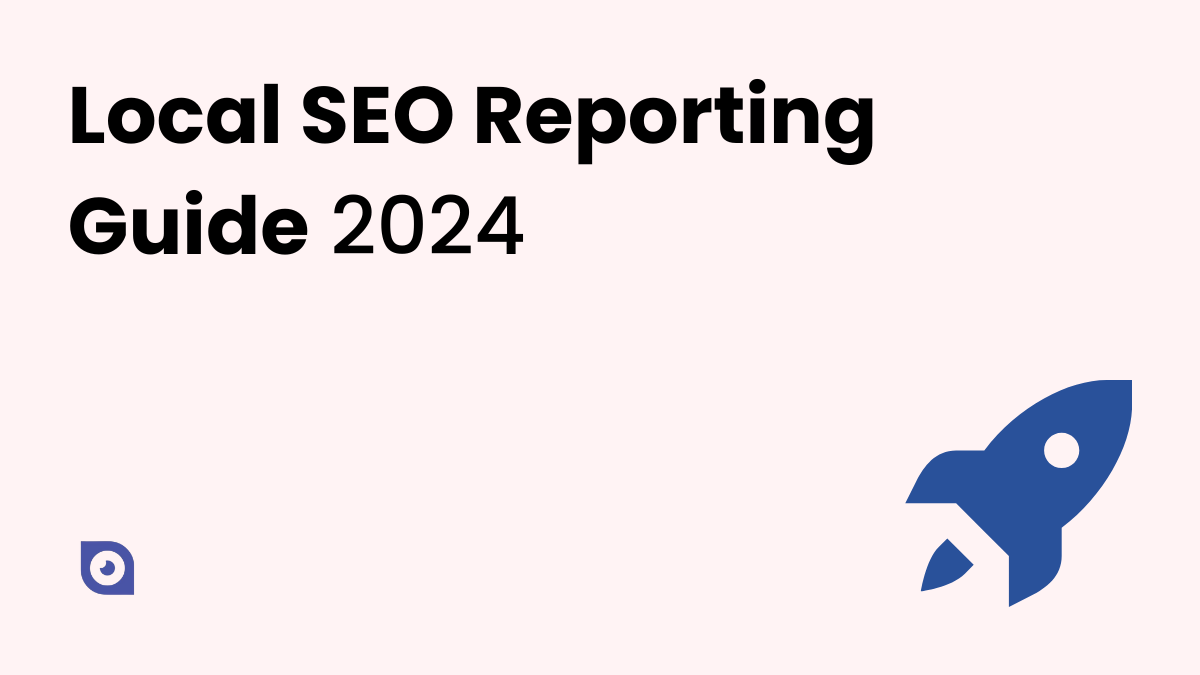
Have you ever searched for a nearby restaurant, salon, or plumber on your phone? If so, you have used local search, a powerful way to find relevant and trustworthy businesses in your area. According to a study by Google, 46% of all searches have a local intent, and 76% of people who search for something nearby visit a related business within a day.
Local search engine optimization or local SEO is the process of optimizing your online presence to attract more customers from relevant local searches. Local SEO helps you rank higher on search engines like Google and Bing, as well as on platforms like Google Maps, Yelp, and Facebook. Local SEO is essential for any business that serves a specific geographic area, such as restaurants, hotels, dentists, lawyers, and more.
But how do you know if your local SEO efforts are working? How do you measure the impact of your local SEO strategy on your traffic, leads, and sales? How do you identify the areas where you need to improve your local SEO performance? This is where local SEO reporting comes in.
Local SEO Reporting
Local SEO reporting is the process of tracking, analyzing, and communicating the key metrics and indicators that measure the effectiveness of your local SEO campaign. Local SEO reporting helps you understand how your business is performing in local search, what factors are influencing your local rankings, and what actions you need to take to optimize your local SEO results.
Local SEO reporting is an essential part of any local SEO strategy, as it helps you measure the impact of your efforts, identify areas of improvement, and communicate your results to clients or stakeholders. However, local SEO reporting can be challenging, as it involves collecting and analyzing data from various sources, such as Google Analytics, Google Business Profile, Google Search Console, and other third-party tools.
Moreover, local SEO reporting requires presenting the data in a clear, concise, and actionable way, so that you can showcase your achievements and provide recommendations for future optimization.
Local SEO reporting also helps you demonstrate the value of your local SEO investment to your stakeholders, such as your clients, managers, or partners.
In this guide, we will show you how to create a comprehensive and actionable local SEO report that covers the most important aspects of local SEO, such as:
- Local visibility and rankings
- Local traffic and conversions
- Local citations and reviews
- Local competitors and opportunities
We will also introduce you to the best tools and resources that you can use to automate and simplify your local SEO reporting process. By the end of this guide, you will have a clear and practical framework for measuring and improving your local SEO performance.
Before moving ahead take a few minutes to understand Local SEO properly.
Understanding Local SEO
Local SEO is a branch of SEO that focuses on optimizing your website and online presence for local search queries. Local search queries are those that have a geographic component, such as “best pizza near me”, “dentist in Phoenix”, or “plumber in Dallas”.
Local search queries indicate that the user is looking for a specific type of business or service in a specific location, and they expect to see relevant and trustworthy results that match their intent.
For example, if you own a pizza restaurant in Phoenix, you would want to rank high on local search results when someone searches for “best pizza near me” or “pizza in Phoenix”.

To achieve this, you would need to optimize your website and online presence for local SEO, which involves:
- By creating and optimizing a Google business profile, which displays your business information, location, reviews, and photos on Google Search and Maps.
- Building and maintaining local or business citations, which are online mentions of your business name, address, phone number, and website on other websites and directories, such as Yelp, TripAdvisor, and Foursquare.
- Generating and managing online reviews, which are feedback from your customers that influence your reputation, trustworthiness, and visibility on local search results.
- Optimizing your website content, metadata, and schema markup for local keywords, such as your city, state, or neighborhood names, and your products or services.
- Implementing local link-building strategies, which are ways to acquire links from other local websites and sources, such as local newspapers, blogs, or associations.
Key Metrics in Local SEO Reporting
To measure the effectiveness of your local SEO campaign, you need to track and analyze the key metrics that reflect your local SEO performance. These metrics help you understand how your website and online presence are attracting, engaging, and converting your local audience.
They also help you identify the strengths and weaknesses of your local SEO strategy, and the areas where you need to improve or optimize.
Some of the key metrics in local SEO reporting are:
Organic traffic
This is the number of visitors who come to your website from organic (unpaid) search results. Organic traffic indicates how well your website is ranking for relevant keywords and topics on search engines like Google and Bing. Organic traffic is important for local SEO because it shows how much exposure and awareness your website is generating among your potential customers.
Local search traffic
This is the number of visitors who come to your website from local search results. Local search results are those that show businesses or services near the user’s location, such as Google Maps, Google My Business, or local pack (a feature in Google’s search results that shows a map and three local business listings relevant to the search). Local search traffic indicates how well your website is ranking for local search queries and how visible your business is on local business listing platforms. Local search traffic is important for local SEO because it shows how much interest and demand your website is generating among your local customers.
Mobile traffic
This is the number of visitors who come to your website from mobile devices, such as smartphones or tablets. Mobile traffic indicates how well your website is optimized for mobile users and how user-friendly your website is on different screen sizes and resolutions. Mobile traffic is important for local SEO because most local searches are performed on mobile devices, and mobile users have different behaviors and expectations than desktop users.
Click-through rate (CTR)
This is the percentage of users who click on your website link from the search results page. CTR indicates how attractive and relevant your website title, URL, and meta description are to the users and how well they match the user’s search intent. CTR is important for local SEO because it shows how much traffic your website is getting from the search results and how well your website is competing with other local businesses.
Bounce rate
This is the percentage of users who leave your website after viewing only one page. Bounce rate indicates how engaging and satisfying your website content and design are to the users and how well they meet the user’s needs and expectations. Bounce rate is important for local SEO because it shows how much retention and loyalty your website is creating among your visitors and how likely they are to return or take action.
These are some of the key metrics in local SEO reporting that you should monitor and analyze regularly. By tracking these metrics, you can measure the impact of your local SEO efforts on your traffic, leads, and sales.
You can also use these metrics to benchmark your local SEO performance against your competitors and industry standards and to identify the best practices and opportunities for improvement.
Local SEO Reporting Tools & How to Use Them?
There are many tools available that can help you with local SEO reporting, whether you are an agency, an in-house team, or a solo practitioner. These tools can help you automate the process of gathering and organizing local SEO data, create custom and branded reports, and track your progress over time.
Some of the best tools for local SEO reporting are:
SE Ranking
SE Ranking is a comprehensive SEO platform that offers a dedicated local SEO reporting feature. You can use SE Ranking to track your local rankings, citations, reviews, and Google My Business performance, as well as generate informative and customizable reports.
SE Ranking also integrates with Google Analytics and Google Search Console, so you can get a complete picture of your local SEO health. SE Ranking is a great tool for agencies and in-house teams, as it allows you to create unlimited projects, add multiple users, and white-label your reports.
- Pros: It is a user-friendly and affordable tool that provides a lot of value for local SEO reporting. It has a rich set of features, a flexible pricing model, and a responsive customer support team.
- Cons: SE Ranking does not have a mobile app, and some of its features, such as keyword research and backlink analysis, are not as advanced as some of its competitors.
You can use SE Ranking to create a local SEO report that shows your local ranking changes, citation profile, review summary, and Google My Business insights. You can also customize the report with your logo, colors, and comments, and schedule it to be sent to your clients or colleagues via email or PDF.
How to Use SE Ranking for Local SEO Reporting?
Here’s a step-by-step guide for setting up your Local Marketing project in SE Ranking:
- Click on the Add Location button at the upper right corner or under the Locations table.
- Select your Google account from the drop-down list or add a new account and click on the Connect button. If you are not logged in to your Google account, you will need to do so.
- Choose the location you want to track from the list of your Google Business Profiles or add a new one manually.
- Enter the target keywords you want to track for your location. You can also use the Keyword Suggestion tool to find relevant keywords based on your location and industry.
- Specify the tracking points for your location. These are the points on the map, such as a city, region, street, or address, where you want to check your rankings on Google Maps. You can add up to 10 tracking points per location.
- Choose the frequency of ranking updates. You can select daily, every 3 days, or weekly updates.
- Click on the Save button to create your project.
Once you have created your project, you can access the Local Marketing dashboard, where you can see various metrics and charts related to your local SEO performance. You can also create and customize your local SEO reports by clicking on the Reports button in the upper right corner.
You can choose from different report templates, such as Local Rankings, Local Marketing Audit, Reputation Management, and Google Business Profile Insights. You can also edit the report layout, add or remove widgets, and apply filters and sorting options. You can also schedule your reports to be sent to your clients or colleagues via email or PDF.
Some tips and tricks for using SE Ranking for local SEO reporting are:
- Use the Heatmap feature to visualize your local ranking distribution on the map and identify the areas where you need to improve your visibility.
- Use the Competitors tab to compare your local SEO performance with your main competitors and see their rankings, citations, and reviews.
- Use the Reviews tab to monitor and manage your online reputation across different platforms, such as Google, Facebook, Yelp, and Trustpilot. You can also reply to reviews directly from SE Ranking and export them to CSV or PDF.
- Use the Google Business Profile Insights tab to see how your profile performs on Google and how customers interact with it. You can see metrics such as views, actions, calls, directions, photos, and posts.
Semrush
Semrush is a premium SEO platform that offers a wide range of tools for local SEO reporting. You can use Semrush to monitor your local rankings, citations, reviews, and Google My Business performance, as well as conduct a local SEO audit and competitor analysis.
Semrush also integrates with Google Analytics and Google Search Console, as well as other third-party tools, such as Facebook, Twitter, and Yelp. Semrush is a powerful tool for agencies and in-house teams, as it allows you to create and manage multiple projects, add multiple users, and white-label your reports.
- Pros: Semrush is a robust and reliable tool that provides a lot of functionality for local SEO reporting. It has a huge database of keywords, backlinks, and domains, a sleek and intuitive interface, and a helpful customer support team.
- Cons: It is a pricey tool that may not be suitable for small businesses or solo practitioners. It also has a steep learning curve, and some of its features, such as citation management and review monitoring, are not as comprehensive as some of its competitors.
You can use Semrush to create a local SEO report that shows your local ranking overview, citation analysis, review analysis, and Google My Business analysis. You can also customize the report with your logo, colors, and comments, and export it to various formats, such as PDF, Excel, or HTML.
How to Use Semrush for Local SEO Reporting?
Here’s a step-by-step guide for setting up your local SEO project in Semrush:
- Log in to your Semrush account and create a new project. Enter your website URL and name your project.
- Choose the tools you want to use for your project. You can select from various tools, such as Position Tracking, Site Audit, Backlink Audit, Listing Management, and more.
- To track your local rankings, launch Position Tracking and click on the Set Up button. The tool will help you set up your campaign by entering your target keywords, location, device, and competitors. You can also use the Keyword Suggestion tool to find relevant keywords based on your location and industry.
- To perform a local SEO audit, launch Site Audit and click on the Set Up button. The tool will crawl your website and check for various issues that could affect your local SEO, such as broken links, duplicate content, missing tags, and more. You can see the overall health score of your website, as well as the list of issues and recommendations for fixing them.
- To monitor your citations, launch Listing Management and click on the Set Up button. The tool will connect to your Google account and show you your citation profile, including the number and quality of your citations, as well as the consistency and accuracy of your NAP data. You can also compare your citation profile with your competitors and see their citation sources.
- To manage your reviews, launch Listing Management and click on the Reviews tab.
SEO PowerSuite
SEO PowerSuite is a desktop SEO software that offers a complete toolkit for local SEO reporting. You can use SEO PowerSuite to track your local rankings, citations, reviews, and Google My Business performance, as well as perform a local SEO audit and competitor analysis.
SEO PowerSuite also integrates with Google Analytics and Google Search Console, as well as other third-party tools, such as Moz, Majestic, and Ahrefs. SEO PowerSuite is a good tool for in-house teams and solo practitioners, as it allows you to create unlimited projects, run unlimited reports, and store unlimited data.
- Pros: It is a fast and accurate tool that provides a lot of flexibility for local SEO reporting. It has a one-time payment option, a customizable report builder, and a cloud service for data storage and sharing.
- Cons: SEO PowerSuite is a desktop software that requires installation and updates, and may not work well on some operating systems. It also does not have a mobile app, and some of its features, such as citation management and review monitoring, are not as user-friendly as some of its competitors.
You can use SEO PowerSuite to create a local SEO report that shows your local ranking progress, citation profile, review summary, and Google My Business performance. You can also customize the report with your logo, colors, and comments, and save it to various formats, such as PDF, HTML, or CSV.
How to Use SEO PowerSuite for Local SEO Reporting?
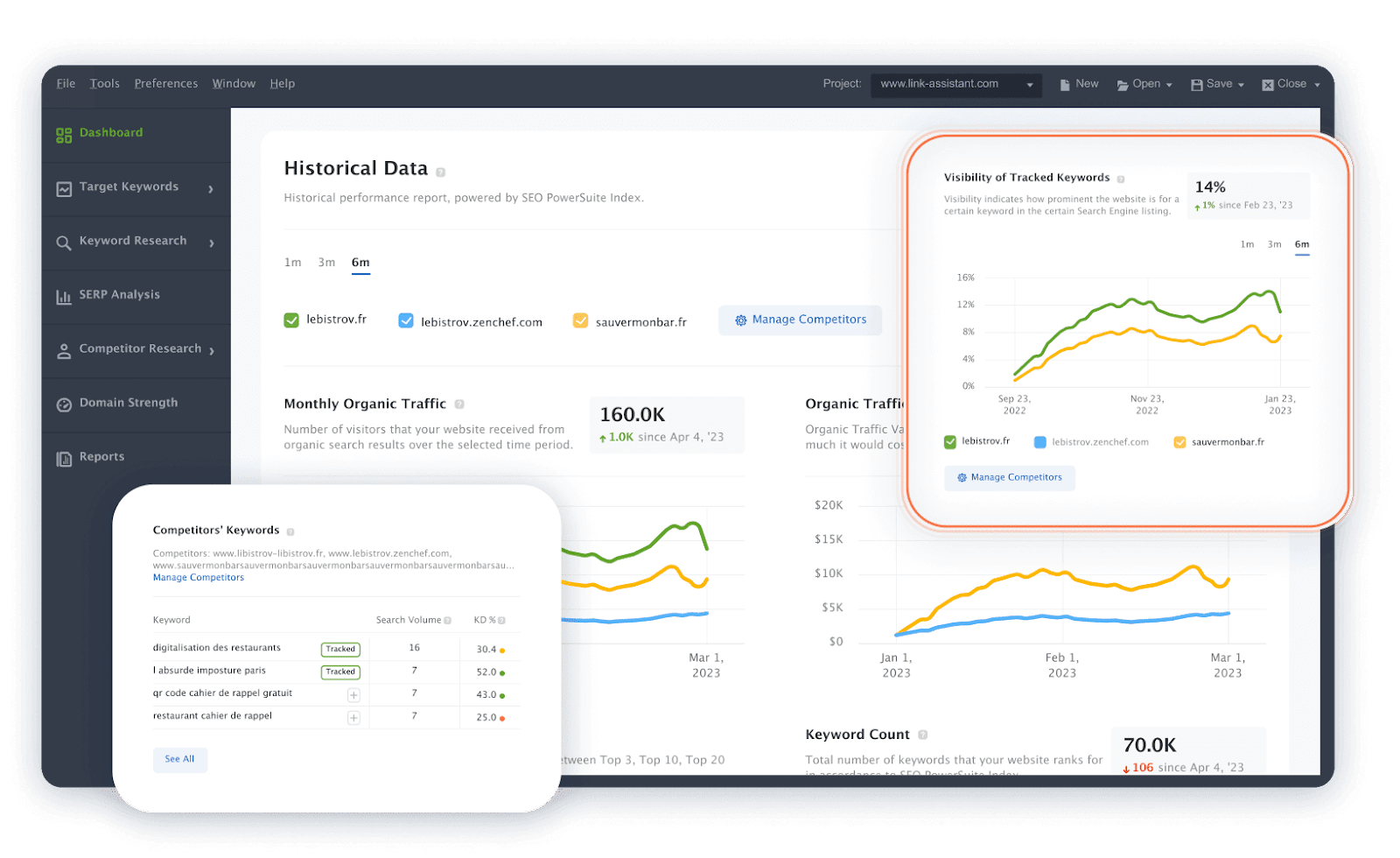
Here’s a step-by-step guide for setting up your local SEO project in SEO PowerSuite:
- Download and install SEO PowerSuite on your computer. You can choose from Windows, Mac, or Linux versions.
- Launch SEO PowerSuite and create a new project. Enter your website URL and name your project.
- Choose the keywords you want to track for your website. You can also use the Keyword Research module to find relevant keywords based on your location and industry.
- Choose the search engines you want to track your rankings on. You can select from over 500 search engines, including Google, Bing, Yahoo, and others. You can also specify the location and language of each search engine.
- Click on the Next button to start tracking your rankings. You can see your current positions, ranking history, traffic, and competitors for each keyword and search engine.
- To track your local SEO performance, you need to use the other tools in SEO PowerSuite: Website Auditor, SEO SpyGlass, and LinkAssistant. You can access them from the main dashboard or the menu bar.
- To perform a local SEO audit, launch Website Auditor and click on the Update Project button. The tool will crawl your website and check for various issues that could affect your local SEO, such as broken links, duplicate content, missing tags, and more. You can see the overall health score of your website, as well as the list of issues and recommendations for fixing them.
- To monitor your citations, launch SEO SpyGlass and click on the Update Project button. The tool will find and analyze your backlinks, as well as your citation sources. You can see the number and quality of your citations, as well as the consistency and accuracy of your NAP (name, address & phone) data. You can also compare your citation profile with your competitors and see their citation sources.
- To manage your reviews, launch LinkAssistant and click on the Add button. The tool will help you find and contact potential review platforms, such as Google, Facebook, Yelp, and Trustpilot. You can see the list of review platforms, their ratings, and their contact details. You can also create and send personalized outreach emails to request reviews from your customers.
- To track your Google My Business performance, launch Rank Tracker and click on the Google My Business button. The tool will connect to your Google account and show you various metrics and insights related to your profile, such as views, actions, calls, directions, photos, and posts.
Once you have set up your project, you can access the Reports module, where you can create and customize your local SEO reports. You can choose from different report templates, such as Rankings, Website Audit, Backlinks, and Google My Business.
You can also edit the report layout, add or remove widgets, and apply filters and sorting options. Additionally, you can save your reports in various formats, such as PDF, HTML, or CSV.
Some tips and tricks for using SEO PowerSuite for local SEO reporting are:
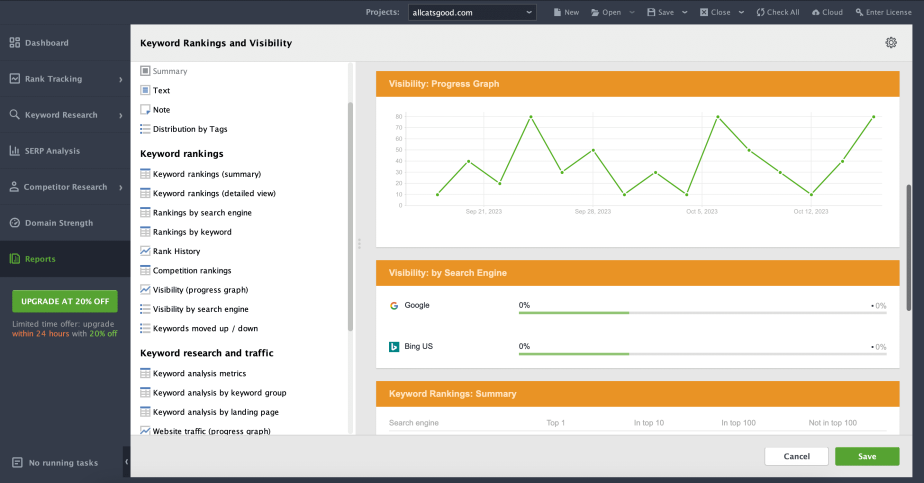
- Use the Preferences menu to adjust the settings for each tool, such as crawling speed, proxy settings, search safety settings, and more.
- Use the Scheduler feature to automate your tasks and reports. You can set the tool to run certain tasks and generate reports at specific intervals, such as daily, weekly, or monthly.
- Use the Cloud Storage feature to store and share your data and reports online. You can sync your projects with SEO PowerSuite Cloud or Dropbox and access them from any device or location.
- Use the White Label feature to brand your reports with your logo, colors, and comments.
How to Interpret Your Local SEO Report?
Your local SEO report should provide you with a clear and comprehensive overview of your local SEO performance, as well as the performance of your competitors. Depending on the tool you use, your local SEO report may include different sections and metrics, but the main ones you should pay attention to are:
Local Rankings
This section shows you how your website ranks for your target keywords on different search engines and locations. You can see your current positions, ranking history, traffic, and competitors for each keyword and search engine.
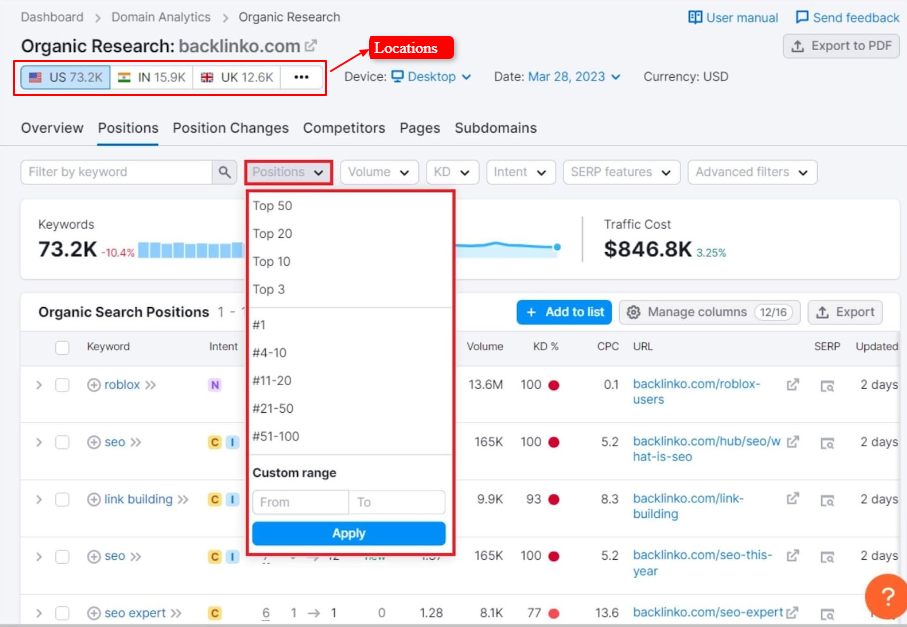
You can also see how your rankings compare to your competitors and how they change over time. This section helps you evaluate your visibility and reach on local search results, and identify the keywords and locations where you need to improve your rankings.
Local SEO Audit
This section shows you the health and quality of your website, as well as the issues and errors that could affect your local SEO. You can see the overall health score of your website, as well as the list of issues and recommendations for fixing them.
You can also see how your website performs on various aspects, such as site structure, content, technical SEO, mobile-friendliness, and more. This section helps you diagnose and resolve the problems that could harm your local SEO, and improve the user experience and usability of your website.
Business Citations
This section shows you the quantity and quality of your citations, as well as the consistency and accuracy of your NAP data. You can see the number and quality of your citations, as well as the citation sources and platforms where your business is listed.
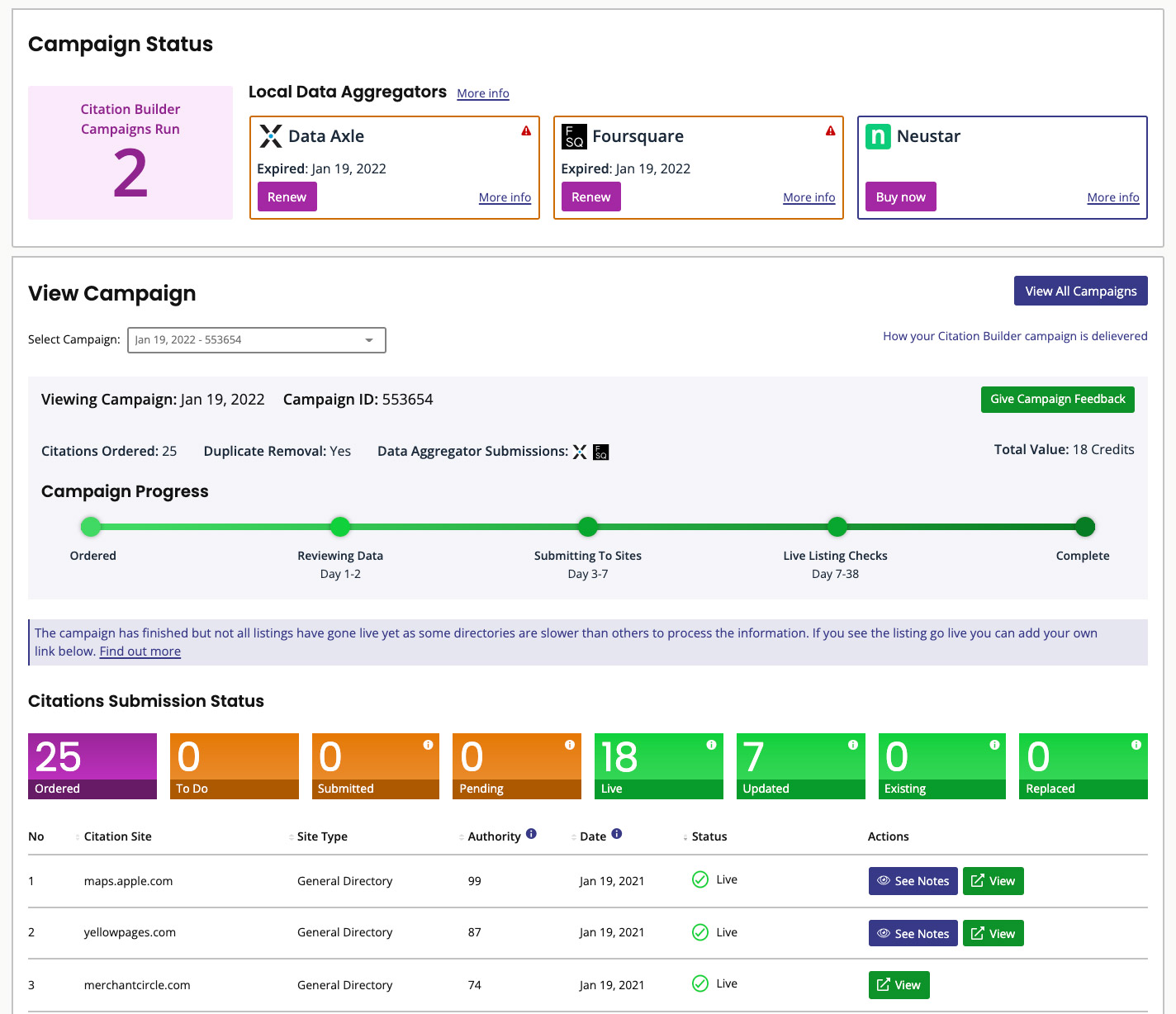
You can also compare your citation profile with your competitors and see their citation sources. This section helps you monitor and manage your online presence and reputation across different platforms, and ensure that your business information is correct and consistent everywhere.
Reviews
This section shows you the quantity and quality of your reviews, as well as the platforms and sources where your customers leave feedback. You can see the number and rating of your reviews, as well as the sentiment and tone of your reviews.
You can also reply to reviews directly from the tool and export them to CSV or PDF. This section helps you monitor and manage your online reputation and customer satisfaction, and encourage more positive reviews from your customers.
Google My Business
This section shows you how your Google My Business profile performs on Google and how customers interact with it. You can see metrics such as views, actions, calls, directions, photos, and posts.
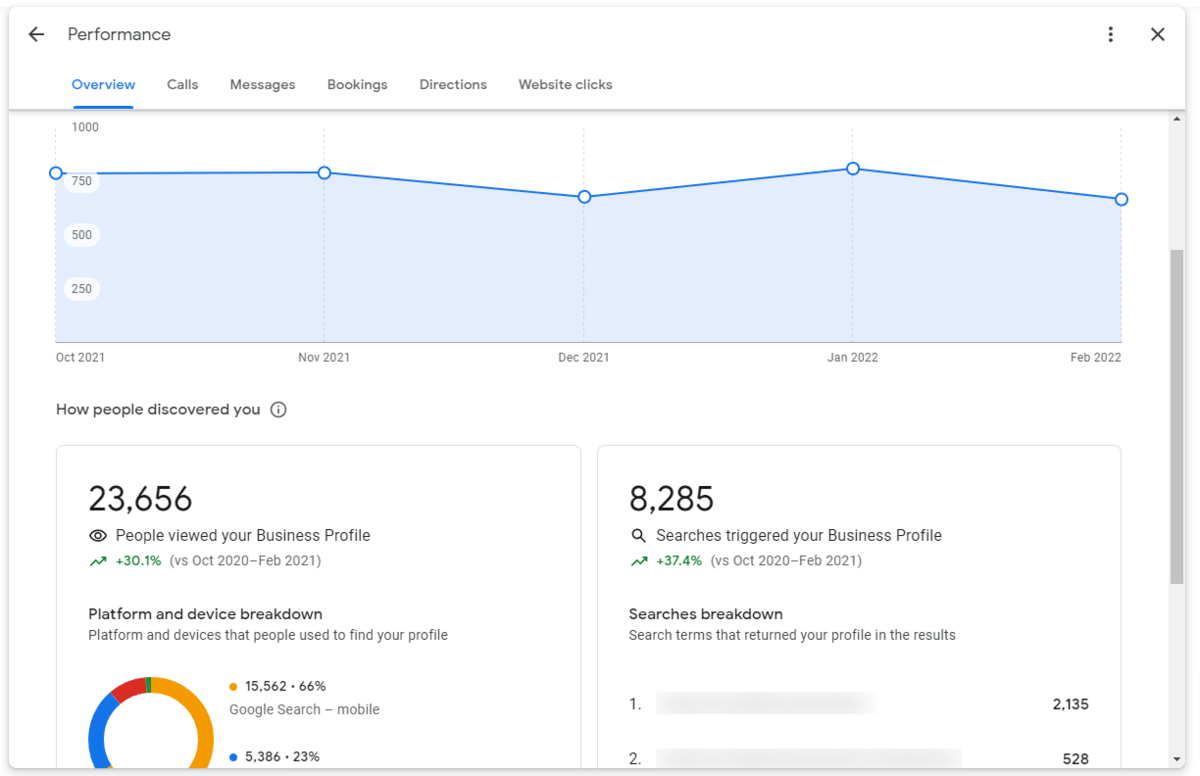
You can also see how your profile compares to your competitors and how it changes over time. This section helps you optimize and update your Google My Business profile, and leverage its features to attract and engage more customers.
How to Make Data-Driven Decisions Based on Your Local SEO Report?
Your local SEO report should not only provide you with data and information but also with insights and recommendations. Based on your local SEO report, you should be able to make data-driven decisions that will help you optimize your local SEO strategy and achieve your goals. Here are some examples of how you can use your local SEO report to make data-driven decisions:
- If your local rankings are low or declining, you should analyze the keywords and locations where you are losing ground, and identify the factors that could be affecting your rankings, such as competition, algorithm changes, or technical issues. You should then implement the necessary actions to improve your rankings, such as optimizing your content, building more links, or fixing your errors.
- If your local SEO audit reveals issues and errors on your website, you should prioritize and fix them as soon as possible, following the recommendations provided by the tool. You should also monitor the impact of your fixes on your website’s health and performance, and make sure that your website is fast, secure, and user-friendly.
- If your citations are incomplete or inconsistent, you should update and correct your NAP data across all platforms, using the tool’s citation management feature. You should also look for new and relevant citation sources and platforms where you can list your business, and remove any duplicate or outdated listings.
- If your reviews are negative or scarce, you should respond to your existing reviews and address any issues or complaints, using the tool’s review monitoring feature. You should also ask for more reviews from your satisfied customers, using the tool’s outreach feature. You should also showcase your positive reviews on your website and social media, and use them to improve your products and services.
- If your Google My Business profile is underperforming or outdated, you should optimize and update it with relevant and accurate information, using the tool’s Google My Business feature. You should also use the features of Google My Business, such as photos, posts, offers, and Q&A, to enhance your profile and engage your customers. You should also track and analyze the metrics and insights of your profile, and see how you can improve them.
Latest Updates in Local SEO Reporting
Local SEO reporting is a dynamic and evolving field, as search engines constantly update their algorithms and features to provide the best user experience and results. As a local business owner or marketer, you need to stay on top of the latest trends and updates in local SEO reporting and adjust your strategy accordingly.
Google’s Core Web Vitals Update
One of the biggest updates that Google rolled out in 2023 was the Core Web Vitals update, which introduced a new set of metrics to measure the quality of user experience on web pages. These metrics include:
- Largest Contentful Paint (LCP): This measures how long it takes for the largest content element on the page to load, such as an image or a video. A good LCP score is 2.5 seconds or less.
- First Input Delay (FID): This measures how long it takes for the page to respond to the first user interaction, such as a click or a tap. A good FID score is 100 milliseconds or less.
- Cumulative Layout Shift (CLS): This measures how much the page layout shifts during the loading process, which can affect the user experience and cause accidental clicks. A good CLS score is 0.1 or less.
These metrics are now part of Google’s ranking factors, which means that they can affect your local SEO performance and visibility. Therefore, you need to optimize your website for these metrics and monitor them using tools like Google Search Console, Google PageSpeed Insights, and Google Lighthouse.
Google’s Local Pack Update
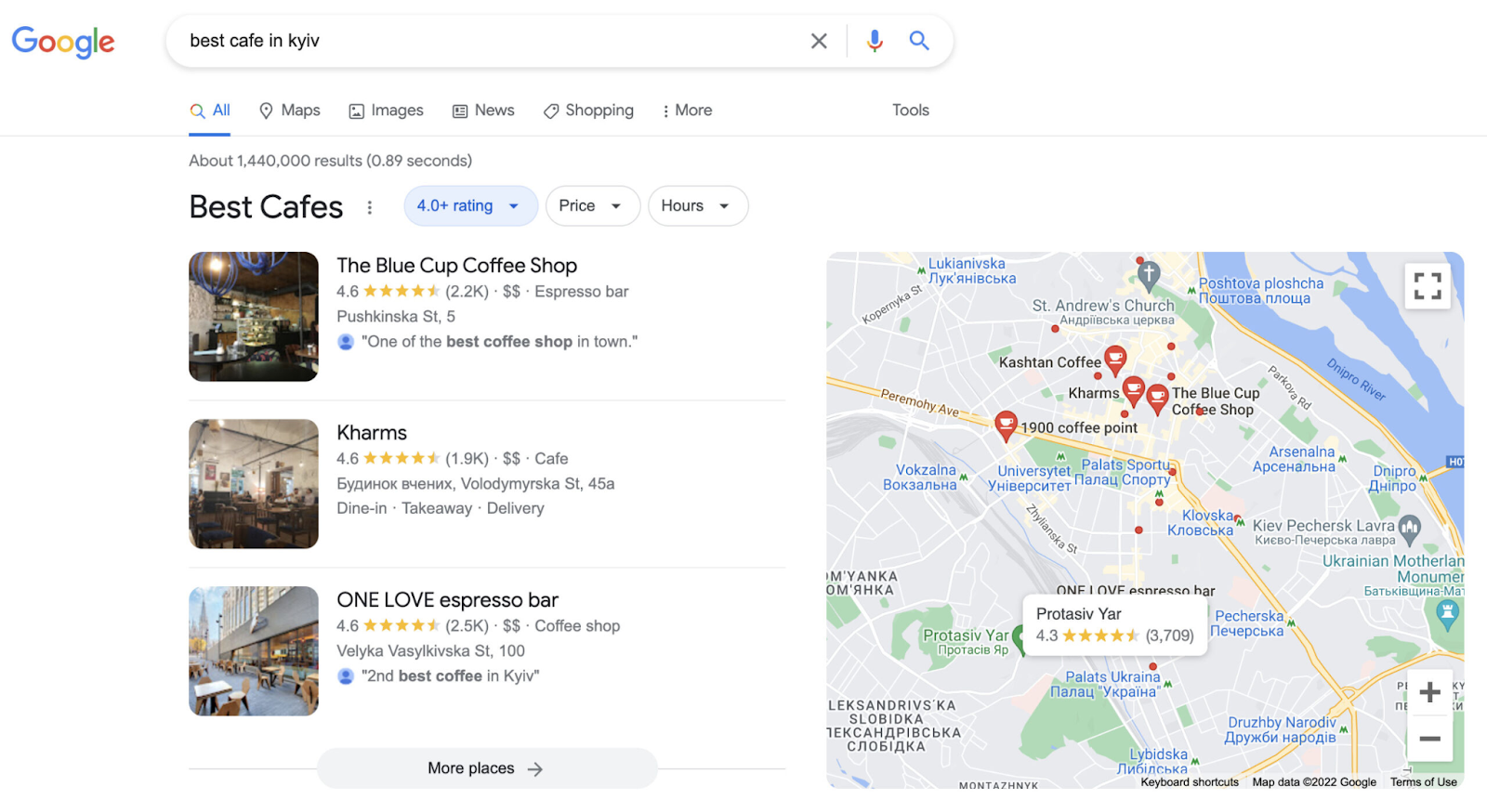
Another significant update that Google made in 2023 was the Local Pack update, which changed the way the Local Pack results are displayed on the search results page. The local pack is the set of three local business results that appear at the top of the page, along with a map of their locations. The local pack update introduced the following changes:
- More information: The local pack now shows more information about each business, such as ratings, reviews, hours, and services. This makes the local pack more informative and useful for users, and also more competitive for businesses.
- More filters: The local pack now allows users to filter the results by different criteria, such as price, availability, and features. This makes the local pack more personalized and relevant for users, and also more challenging for businesses.
- More actions: The local pack now enables users to perform different actions directly from the results, such as calling, booking, or ordering. This makes the local pack more convenient and engaging for users, and also more profitable for businesses.
These changes mean that you need to optimize your Google My Business profile and make sure that it is complete, accurate, and up-to-date. You also need to encourage and manage your online reviews and offer online booking and ordering options if possible.
Semrush’s Client Portal Feature

As we mentioned above, Semrush is one of the best tools for local SEO reporting. It offers a wide range of features and integrations to help you monitor and improve your local SEO performance.
One of the newest and most useful features that Semrush introduced in 2023 is the Client Portal feature, which allows you to streamline your agency work and enhance your client communication. The Client Portal feature lets you:
- Give your clients a dedicated and password-protected portal with 24/7 access to their local SEO reports and data.
- Select which reports you want your client to receive with a few clicks, and customize them with your logo, colors, and comments.
- Track your client’s feedback and satisfaction with the reports, and see how they interact with them.
The Client Portal feature is a great way to simplify and automate your local SEO reporting process and provide a better service and experience to your clients. You can also use the Client Portal feature to upsell your other services and increase your retention rate.
Conclusion
Local SEO reporting is a key component of any local SEO strategy, as it helps you measure your performance, identify opportunities, and communicate your results. However, local SEO reporting can also be complex and challenging, as it involves collecting and analyzing data from various sources and platforms. That’s why you need to use the right tools and methods to simplify and automate your local SEO reporting process and provide the best value and service to your clients or stakeholders.
In this article, we have covered the essential aspects of local SEO reporting, such as:
- Benefits and challenges of local SEO reporting
- Key metrics and indicators of local SEO performance
- Best tools and features for local SEO reporting
- Latest trends and updates in local SEO reporting
- Best practices and tips for local SEO reporting
We hope that this article has helped you understand and improve your local SEO reporting skills and that you will use the tools and techniques we have recommended to optimize your local SEO strategy and achieve your goals. If you have any questions or feedback, please feel free to contact us or leave a comment below. Thank you for reading and happy local SEO reporting!
References:
- https://www.klientboost.com/seo/seo-reporting-tools/
- https://www.semrush.com/local/blog/local-seo-reports/
- https://dashthis.com/local-seo-report-template/
- https://seranking.com/blog/local-marketing-tool/
- https://help.link-assistant.com/hc/en-us/articles/5415748480796-How-to-automate-reporting-in-SEO-PowerSuite
- https://backlinko.com/local-seo-guide
- https://www.searchenginejournal.com/local-seo-reporting/465222/

